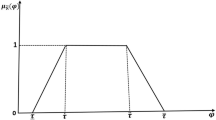Abstract
A recent trend in database performance tuning is towards self tuning for some of the important benefits like efficient use of resources, improved performance and low cost of ownership that the auto-tuning offers. Most modern database management systems (DBMS) have introduced several dynamically tunable parameters that enable the implementation of self tuning systems. An appropriate mix of various tuning parameters results in significant performance enhancement either in terms of response time of the queries or the overall throughput. The choice and extent of tuning of the available tuning parameters must be based on the impact of these parameters on the performance and also on the amount and type of workload the DBMS is subjected to. The tedious task of manual tuning and also non-availability of expert database administrators (DBAs), it is desirable to have a self tuning database system that not only relieves the DBA of the tedious task of manual tuning, but it also eliminates the need for an expert DBA. Thus, it reduces the total cost of ownership of the entire software system. A self tuning system also adapts well to the dynamic workload changes and also user loads during peak hours ensuring acceptable application response times. In this paper, a novel technique that combines learning ability of the artificial neural network and the ability of the fuzzy system to deal with imprecise inputs are employed to estimate the extent of tuning required. Furthermore, the estimated values are moderated based on knowledgebase built using experimental findings. The experimental results show significant performance improvement as compared to built in self tuning feature of the DBMS.







Similar content being viewed by others
References
Acedo MA, Molina MA, Silva R, Marciano M, Portilla EA (2009) Authentication review for nodes in wireless sensor networks. Revista Electrónica de Estudios Telemáticos 9(1):1–23
Agarwal S, Bruno N, Chaudhari S (2006) AutoAdmin: self tuning database system technology. In: IEEE data engineering bulletin
Agarwal S et al (2007) Automated selection of materialized views and indexes. In: VLDB
Chaudhuri S, Weikum G (2006) Foundations of automated database tuning. In: Data engineering
Chen ANK (2006) Robust optimization for performance tuning of modern database systems. Eur J Oper Res 171:412–429
Cheng SW, Garlan D et al (2006) Architecture based self adaptation in the presence of multiple objectives. In: Proceedings of 2006 international journal of computer systems and engineering
Choudhuri S, Narasayya V (2007) Self tuning database systems: a decade progress. Microsoft Research
Choudhuri S, Weikum G (2000) Rethinking database system architecture: towards a self tuning RISC style database system. In: VLDB, pp 1–10
Dageville B, Dias K (2006a) Oracle’s self tuning architecture and solutions. In: IEEE data engineering bulletin, vol 29
Dageville B, Dias K (2006b) Oracle’s self tuning architecture and solutions. In: Bulletin of IEEE
Debnath BK, Lilja DJ, Mokbel MF (2008) SARD: a statistical approach for ranking database tuning parameters. In: Data engineering workshop, 2008. ICDEW 2008. IEEE 24th international conference
Holze M, Ritter N (2011) System models for goal-driven self-management in autonomic databases. Data Knowl Eng 70:685–701
Hullermeier E (2011) Fuzzy sets in machine learning and data mining. Appl Comput 156:387–406
Iglesias JA, Angelov P, Ledezma A, Sanchis A (2010) An evolving classification of agents behaviors: a general approach. Evol Syst 1(3):161–172
Koopman P (2004) Elements of the self-healing system problem space. In: IEEE data engineering bulletin
Leite D, Ballini R, Costa P, Gomide F (2012) Evolving fuzzy granular modeling from nonstationary fuzzy data streams. Evol Syst 3(2):65–79
Liu P (2005) Design and implementation of self healing database system. In: IEEE conference
Nehme RV (2008) Database, heal thyself. In: Data engineering workshop
Peng X, Chen B et al (2012) Self-tuning software systems through dynamic quality tradeoff and value-based feedback control loop. J Syst Softw 85:2707–2719
Pérez-Cruz JH, Alanis AY, Rubio JJ, Pacheco J (2012) System Identification based on multilayer differential neural networks: a new result. J Appl Math 2012:1–20
Rabinovitch G, Wiese D (2007) Non-linear optimization of performance functions autonomic database performance tuning. In: IEEE conference
Rubio JJ (2009) SOFMLS: online self organizing fuzzy modified least square network. IEEE Trans Fuzzy Syst 17(6):1296–1309
Rubio JJ, Angelov P, Pacheco J (2011) Uniformly stable backpropagation algorithm to train a feedforward neural network. IEEE Trans Neural Netw 22(3):356–366
Satish SK, Saraswatipura MK, Shastry SC (2007) DB2 performance enhancements using Materialized Query Table for LUW Systems, 2007. In: ICONS ’07, second international conference
Storm AJ et al (2006) Adaptive self-tuning of memory in DB2. In: VLDB
Tran DN, Huynh PC et al (2008) A new approach to dynamic self-tuning of database buffers. In: ACM transactions on storage, vol 4
Wang S, Summers RM (2012) Machine learning and radiology. Med Image Anal 16:933–951
Weikum G, Moenkerngerg A et al (1993) Self-tuning database technology and information services: from wishful thing to viable engineering. In: Parallel and distributed information system
Weikum G, Monkenberg A (2002) Self-tuning database technology: from wishful thinking to viable engineering. In: VLDB conference, pp 20–31
Wiese D, Rabinovitch G (2009) Knowledge management in autonomic database performance tuning. In: Proceedings of 3rd International conference on autonomic and autonomous systems, 2007, p 48
Acknowledgments
We deeply acknowledge the support in the form of computing facilities and funding from our esteemed management of Karnataka Law Society, Belgaum, Karnataka. Our thanks are also due to our Principal, Dr. A.S. Deshpande for his support and encouragement. We also acknowledge the contributions of Mr. Sumeet of VIIIth semester B.E., Information Science and Engineering department for his assistance in setting up the laboratory for carrying out the experiments related to this research work. Our thanks are also due to Mr. Moogbasav, Instructor, Computer Center, GIT, for providing us with the necessary support in setting up of the test bed for the experiments.
Author information
Authors and Affiliations
Corresponding author
Rights and permissions
About this article
Cite this article
Rodd, S.F., Kulkarni, U.P. & Yardi, A.R. Adaptive neuro-fuzzy technique for performance tuning of database management systems. Evolving Systems 4, 133–143 (2013). https://doi.org/10.1007/s12530-013-9072-y
Received:
Accepted:
Published:
Issue Date:
DOI: https://doi.org/10.1007/s12530-013-9072-y




